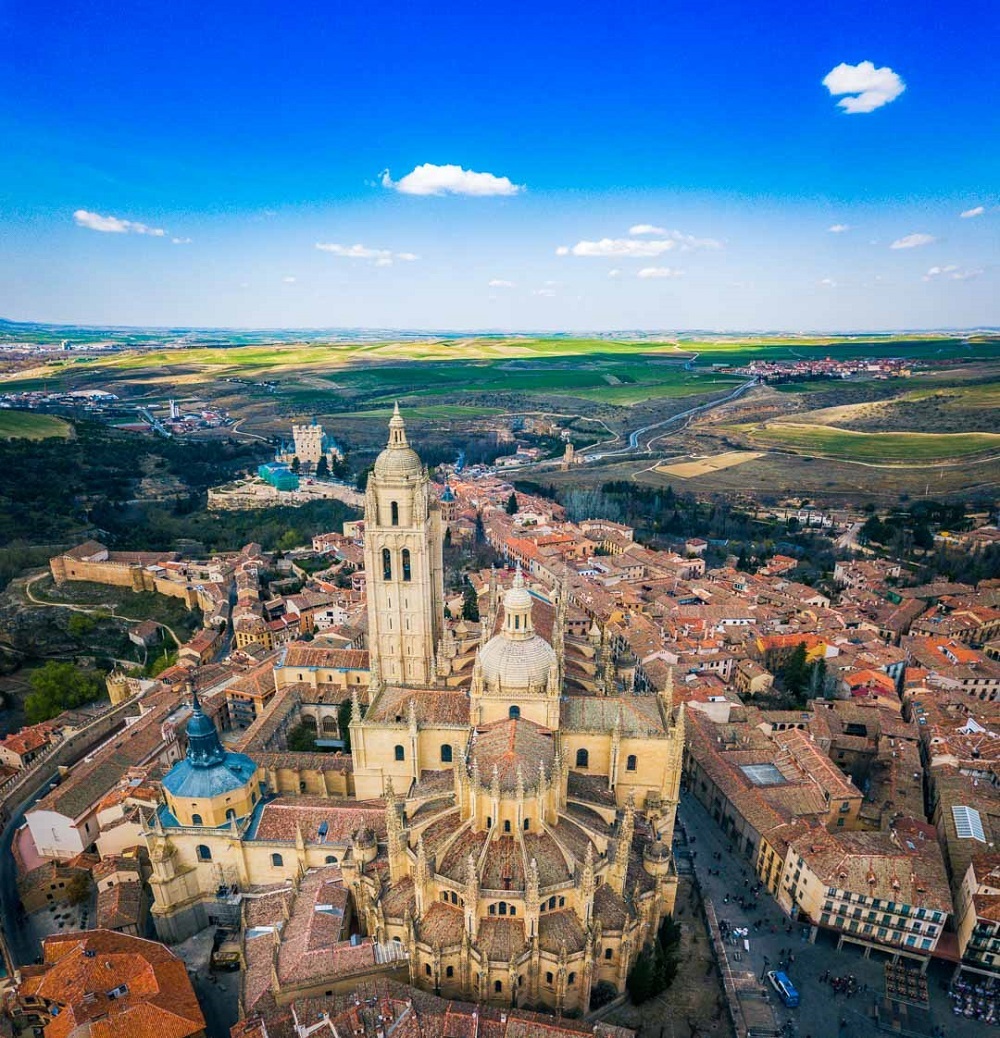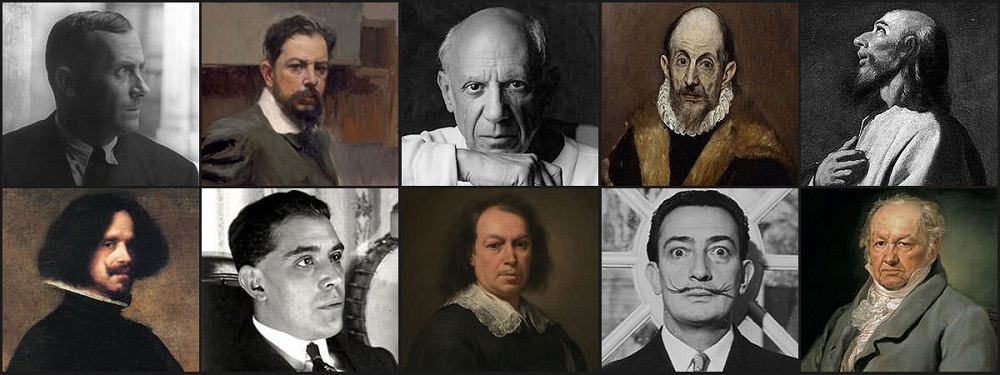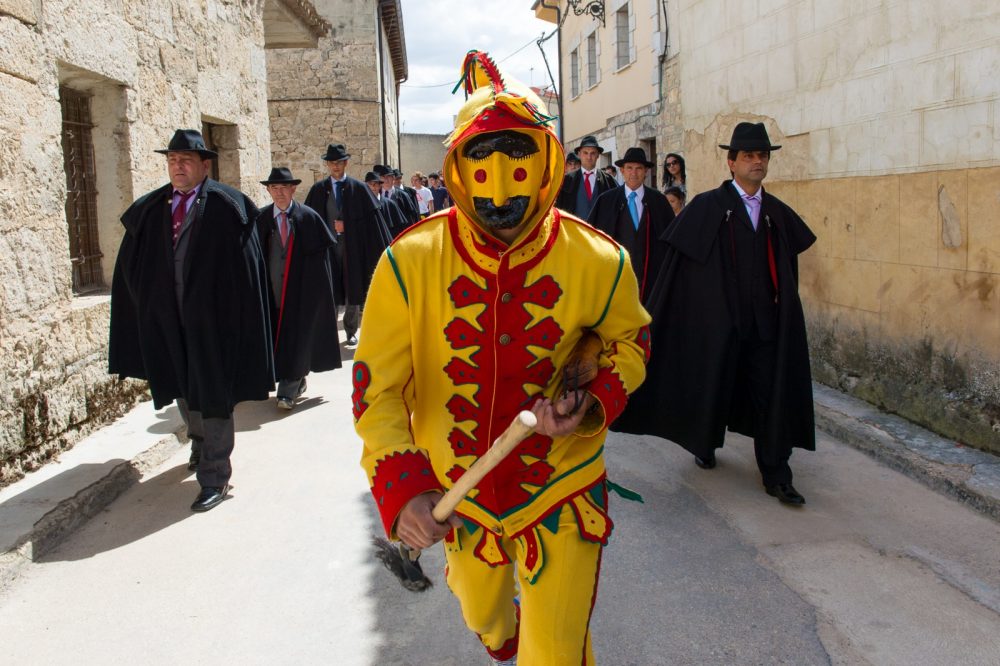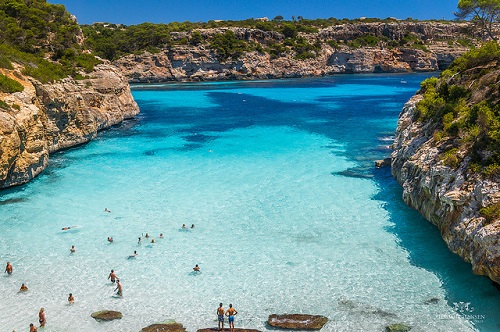Segovia is a charming city in Spain located within the Autonomous Community of Castilla y León. A small city but it sees several hundred thousand visitors every year. Besides, it considered A UNESCO World Heritage Site full of historical buildings, Roman ruins, royal palaces, a Roman aqueduct, museums and Its gastronomy making it a very special and must visit the city.
If you want to know why it’s so attractive, here are 10 reasons that will make you want to visit Segovia.
1- Ancient Roman Aqueduct:
 via – britannica
via – britannica
The Roman aqueduct is a UNESCO World Heritage Site and represents the symbol of Segovia that forms a beautiful backdrop for the historic city. This landmark structure has stood the test of time, persisting two millennia in a remarkably well-preserved condition.
Furthermore, The Segovia aqueduct is one of the two biggest existing Roman landmarks in Spain. Constructed during the Flavio period around 50 AD, the aqueduct channeled water 17 kilometers from the Acebeda River in the Sierra de Fuenfría Mountains throughout a deep valley to the ancient city. An achievement of engineering, the structure was built from 20,400 granite blocks without any cement, and the rows of 167 arches have held together in perfect form to this day. The aqueduct begins near the Granja Palace outside of Segovia and conveys water throughout a canal until it arrives in the city.
The best place to view this landmark is at the Plaza del Azoguejo, the hub of the Old Town, where the aqueduct extends its most height of 28 meters and it ends at the Alcázar in an underground channel.
2- Alcázar:
 via – guias-viajar
via – guias-viajar
Alcázar castle makes a fairy-tale impression. The fortress stands stately above the city on a steep-sided rocky crag. From this position, the views of the surroundings are magnificent. Besides, the impassable location is a demonstration to the original military purpose of the fortress. In addition, the castle dates back to the 12th century, and it served as the residence of King Alfonso VIII and in the 13th century, the building was improved in an artistic Gothic style for John II and Henry IV.
Moreover, the entrance to the castle is at the Torre de Juan II. Visitors can tour all the rooms of the Alcázar, which are beautifully furnished in period style with tapestries, arms and armor. The Throne Room is remarkable for its stunning gilded ceiling it has arched windows presenting exceptional views of the river valley.
3 – Palacio Real la Granja:
 via – sientecastillayleon
via – sientecastillayleon
This magnificent palace far from Segovia about 11 kilometers in the little town of San Ildefonso, nestled in the Sierra de Guadarrama. Besides, in the early 18th century, Philip V chose San Ildefonso as the site for his palace shaped on Louis XIV’s Château de Versailles. Built between 1721 and 1739, the palace beautifully designed in the Baroque style of the famous French palace.
In addition, visitors can see the Throne Room and other apartments embellished with superb Flemish, French, and Spanish tapestries. The palace has a magnificent church that includes a red marble tomb of Philip V and his wife Isabella Farnese.
4- Segovia cathedral:
 via – michelin
via – michelin
This impressive Late Gothic cathedral located at the highest point of the Old Town in the Plaza Mayor dominating its surroundings. The situation provides imposing views of the entire city and the surrounding Sierra de Guadarrama foothills. Besides, this cathedral was the last Gothic one in Spain built between 1525 and 1593.
Moreover, the cathedral constructed of yellow stone, it is intricately articulated facade creates an imposing effect with a tower soaring to 100 meters. Also, the decorative Puerta del Perdón entrance was the masterpiece of Juan Guas. Step inside Illuminated by vibrant stained-glass windows, the 105-meter-long sanctuary has a sense of serenity and harmony. Art works, fine sculptures, and altars decorate the cathedral’s 18 chapels, which are closed by grilles.
The main altarpiece is beautifully crafted of marble, jasper, and bronze and displays a 14th-century ivory figure of the Virgen de la Paz. Furthermore, the cathedral also has an Archive Room that contains more than 500 antique books, including the Sinodal de Aguilafuente, the first book printed in Spain.
5- Contemporary Art Esteban Vicente Museum:
 via – segoviaturismo
via – segoviaturismo
Lovers of abstract and modern art will want to discover the converted 15th-century palace of Henry IV, now a gallery of the works of 20th-century Esteban Vicente Spanish painter. The spare modern display spaces are devoted to the collection of 153 works by Vincente, which include oil paintings, drawings, collages, small sculptures, and works in other media. The greatest emphasis is on those done when he lived and worked in the United States, but the entire evolution of his work in various media is covered.
6 – San Antonio El Real Convent:
 via – sanantonioelreal
via – sanantonioelreal
The San Antonio El Real Convent is situated next to Segovia’s Aqueduct in the south-eastern quarter of the city’s historic district. It is within walking distance of Segovia Cathedral and the Alcázar of Segovia. Besides, Convent is a palace of King Henry IV, this imposing monastery’s centuries-old Gothic and Mudéjar architecture now it is transformed to a hotel and restaurant where you can taste traditional Mediterranean fare in a historic setting.
The San Antonio El Real Convent contains a hidden treasure on the outskirts of Segovia’s historic district. Note the simplicity of the building’s Gothic façade, which dates back to 1455. Enter the church, which features ornate 18th-century Baroque artwork adorning 15th-century foundations.
The striking Mudéjar coffering in the ceiling was left intact as the centuries went by and today is one of the city’s best examples of Mudéjar handwork. Carved from timber sourced from the pine forests of Valsaín, the coffering is in the style of the Spanish monarchies in the House of Trastámara.
7- Plaza Mayor:
 via – spaniaservices
via – spaniaservices
The Plaza Mayor is the heart of Segovia and where the Segovians meet. Among the municipal buildings are the Town Hall, the Juan Bravo Theatre and the new Church of San Miguel, which stands in the center of the square and sunk and moved it to one of its sides.
In the Plaza Mayor we can also see the Cathedral of Segovia, and a few bars and restaurants where Dominated by the cathedral apse. Plaza Mayor reflecting the activities of tourists and locals take tapas, lunch or dinner.
8- Segovia And Its Exquisite Gastronomy:
 via – deliciousfoodandwine
via – deliciousfoodandwine
The gastronomy of Segovia is very popular, especially for its roasts and the way they cook them. The most impressive dishes are the suckling pig, the lamb, the beans, the Castilian soup, the chorizo de Cantimpalos or the ponche Segoviano, among many others. Visit some of their inns and taste some of the most traditional dishes and their rustic decorations. You will never forget the taste and smell of their food.
9- Jewish Quarter (Judería):
 via – toursgratis
via – toursgratis
The old Jewish quarter is situated in the area of Plaza de la Merced and the parish churches of San Miguel and San Andrés and stretches to the Plaza del Socorro. With its characteristic medieval ambience, the old Jewish quarter of Segovia provides hints of the Sephardic past. Street names like Judería Nueva and Judería Vieja offer the first clues. The Convent of Corpus Christi also reveals its former life as a synagogue, built in the 13th century, and you can visit to see remnants of the synagogue’s original decor, such as columns decorated with pineapples and scrolls. This is the best-preserved of the five synagogues that once existed in Segovia.
The district was once enclosed by seven gates including Puerta de San Andrés (Plaza del Socorro), which now presents educational displays about this historic quarter. The Antigua Carnicería Judía (Ancient Jewish Butcher) building now holds the Museo de Segovia (11 Calle Socorro), a museum of fine arts. You’ll find the Centro Didáctico de la Judería, At Judería Vieja 12 where displays and videos in English detail the history of Jews in Segovia and elsewhere in Spain.
10- Monasterio del Parral:
 via – sitiosdeespana
via – sitiosdeespana
In a delightful setting of rolling hills outside the historic center of Segovia, this 15th-century monastery is a peaceful retreat in nature. Built by Henry IV of Spain, the monastery mixes Gothic and Renaissance architectural styles. The principal chapel of the church is Gothic, while the tower of the church is crowned with Renaissance ornamentation. Around the altarpiece are elaborate alabaster landmarks to the Marquises of Villena, who were patrons of the monastery.
One of the characteristics of the church is the Gothic doorway leading to the ante-sacristy. The monastery has four cloisters: the main cloister, La Portería, La Hospedería, and La Enfermería.


 Top 10 Most Famous Spanish Artists and their Arts
Top 10 Most Famous Spanish Artists and their Arts
 El Colacho, the Baby Jumping Festival in Murcia Spain
El Colacho, the Baby Jumping Festival in Murcia Spain
 Discover The Most Beautiful Places In Mallorca, Spain
Discover The Most Beautiful Places In Mallorca, Spain